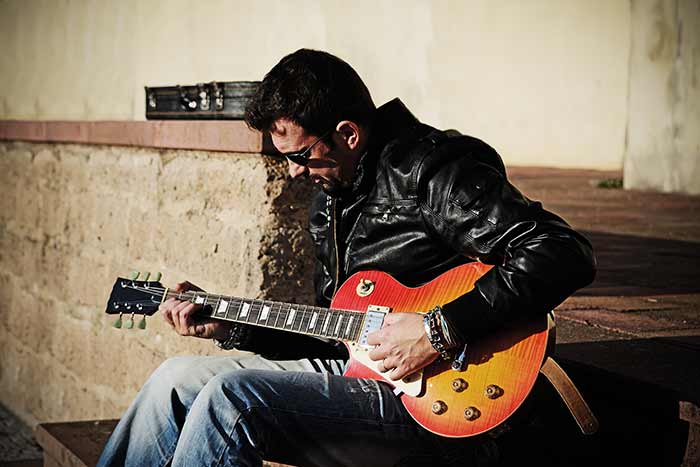One weakness that many guitar players have in common is reading music, most often in
contemporary styled players who never see the need to learn how this works. But what if you have
reached the point in your playing where you think this may help take you to the next level, or you
want to learn the basics to improve your overall musicality? These tips will help you get started.
Learn Some Basic Classical Guitar
One of the many things that I appreciated later on in my guitar journey from starting out on classical
guitar, was the fact that I had first learned to read sheet music before any other form of note taking!
This got me comfortable with different rhythms, and where different notes are placed on the
musical stave right from the get go. Even if you have been playing guitar for some time from
reading TAB’s or learning by ear, this doesn’t mean that it is too late to learn how to read music! I
actually find reading some basic classical pieces to be quite enjoyable, going back to the original
method of learning the guitar that so many have done over the years before TAB’s and 1 minute
YouTube tutorials came into existence.
A good classical guitar book will take you through where you will find the notes in open position on
the musical stave, usually starting on the top three strings, and teach you a series of simple well-
known melodies using these notes to get you comfortable reading the sheet music, and learning
where this corresponds to on the guitar neck. Some great books to start off with include: “Classical
Guitar Technique, Vol 1” by Aaron Shearer, “Enjoy Playing Guitar” by Debbie Cracknell and “Play
The Guitar Book 1” by Don King.
Play Scales From Reading Music
Once you have a basic understanding of the notes in open position on the neck, we can start to
transfer these notes to other places on the guitar. A simple scale that is good to start with is the A
Natural Minor scale, played in 5th position on the neck. Have this notated out in front of you, and
read the music slowly as you play each note. It would also be a good idea to first play this in open
position where you are already comfortable reading music to first hear the scale, which will make
playing it in 5th position a little more familiar to the ear. Try also saying the note names out loud
first in both open and 5th position, that way you are telling your brain how each note corresponds to
the appropriate fret in both positions.
Learn Some Jazz Standards
Jazz standards are a great educational tool for musicians of all levels, and are also great for learning
to read music even if you aren’t interested in becoming a jazz musician. The good thing about jazz
standards is that they are very well known tunes, so the odds are that you’ve probably heard most of
them in your lifetime somewhere along the way. A great exercise that makes for a solid warm up
routine is to sight read a new jazz standard everyday. Have a scan over it with your eyes first
without playing to spot any tricky rhythms, then have a play through at a very slow tempo
unaccompanied to see if you are playing all the notes correctly (this will be much easier to start with
a key signature with little to no accidentals!).
Spend 30minutes or so workshopping any tricky
transitions or rhythms before giving it one final play through, perhaps to a backing track if you are a
little more experienced. This is a great daily routine as it will expose you to many different popular
standards as well as challenge different elements of reading music such as tricky time signatures,
challenging rhythms and hard transitions on the guitar neck. For an extra challenge, once you’ve
played it comfortably in one position on the neck, try it in another position! Some popular standards
include: “Autumn Leaves”, All The Things You Are”, and “Little Sunflower”.
Try it in Different Positions!
So like we were just saying, you can try playing heads of different standards in different positions
on the neck, but what if you aren’t as experienced and want to start off with something a little more
daunting? Starting off with some simple melodies and phrases will achieve this same goal, even if it
is just sections of the Major scale or Natural Minor scale. For example, start off with the first five
notes of the natural minor scale (A, B, C, D, E) and play these first in open position, then 5th
position, 9th position, and then 12th position. This will teach you where this common phrase is
found all over the guitar neck and will be a movement of notes that you will commonly come across
in many different melodies.
Music Notation, Not TAB!
Now I know a lot of you aren’t going to like hearing this, but we need to ditch the TAB! Have you
ever heard people say that you can’t really learn a new language properly unless you live in that
country? Well we need to live in the music notation! If you make this your primary source of taking
notes and learning new material then slowly over time this will become your preferred method of
learning. Now I will admit, there are times that I will use TAB over music notation for specific
things on the guitar that are very position or shape based where TAB perhaps makes more sense, but
the majority of the time I notate charts for gigs and anything else in music notation, since the
advantages of having the exact rhythm in front of you can be very beneficial when sight reading that
regular TAB lacks. Give it a go, I dare you!











